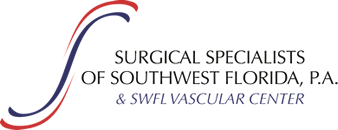Carotid Doppler
A carotid Doppler machine is a device which can be used to measure blood flow velocities within the cervical carotid arteries, as well as the vertebral arteries and sometimes the subclavian arteries by means of non-invasive ultrasonic scanning in which the Doppler effect is utilized.
Arterial Doppler
An Arterial Doppler evaluates the arterial blood flow of the body. It is used many times to evaluate the arteries of the legs.
Abdominal Ultrasound
An abdominal ultrasound uses reflected sound waves to produce a picture of the organs and other structures in the upper abdomen.
Hemodialysis Access Scan
Duplex ultrasound imaging lends itself well to the evaluation of hemodialysis access as grafts and fistulas are superficial structures. This modality allows identification and localization of abnormalities, which may potentially threaten access function and patency. Identification and correction of access abnormalities at early stages may improve longevity and function.
DVT Evaluation
This type of ultrasound shows if there is a blockage in a leg vein. Such blockages are usually caused by blood clots, which can be dangerous and even lifethreatening if they break loose and travel through the blood to the lungs.
Renal Artery Doppler
A renal Doppler, also known as a renal ultrasound procedure, is a non-invasive testing process that uses ultrasound technology to allow a physician to see the kidneys and surrounding blood vessels.
Venous Doppler-
Varicose veins/venous insufficiency
This procedure is performed to evaluate symptoms including leg pain or swelling, excessive varicose veins, shortness of breath, or suspected blood clots in your legs and/or lungs.
Varicose veins are uncharacteristically enlarged superficial veins most often seen in the upper and lower leg. They appear as dark, raised veins that bulge up beyond the normal surface of the skin, and can become painful. This can be a sign of a more severe underlying problem of the venous system. Many people are affected by significant superficial venous insufficiency (saphenous vein and branches.) Often times, these issues are very easily treatable, and are typically done in our office setting. Patients can return to normal activity virtually right after the procedure performed to correct the problem. Most, if not all insurance carriers cover treatment for this condition, as if left untreated this can lead to more serious issues.
Venous insufficiency refers to leaking of the one-way valves within the veins that result in increased pressure in the veins. This pressure can cause bulging varicose veins, leg swelling, cramps or achiness of the calves, restless legs, spider veins, as well as discoloration and thickening of the skin of the lower leg, which if left untreated could result in bleeding or ulceration.


